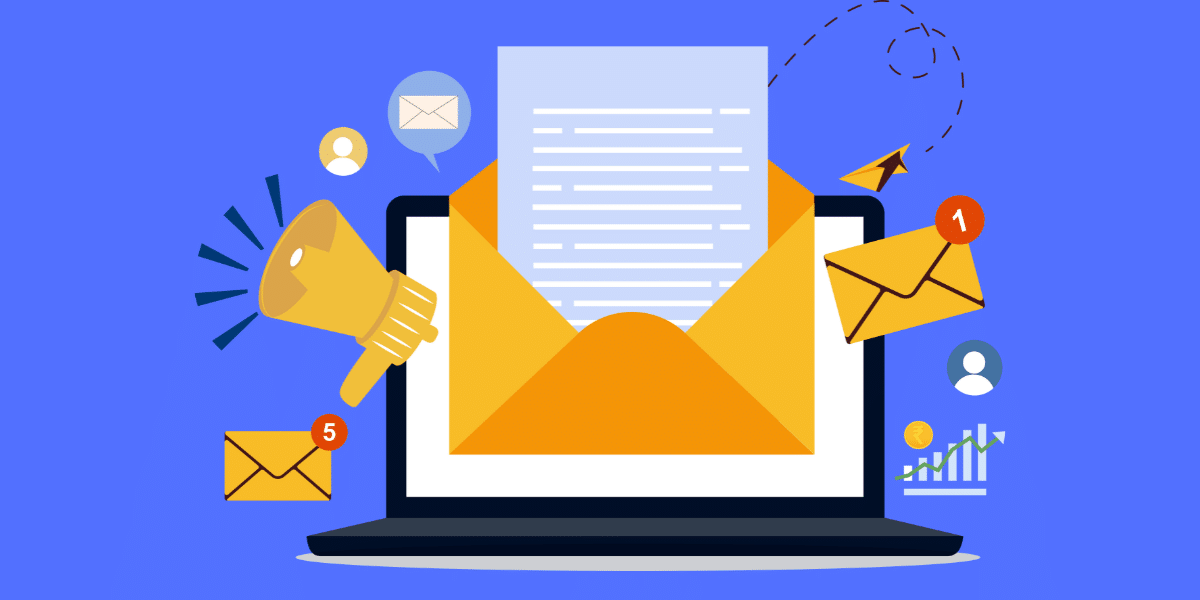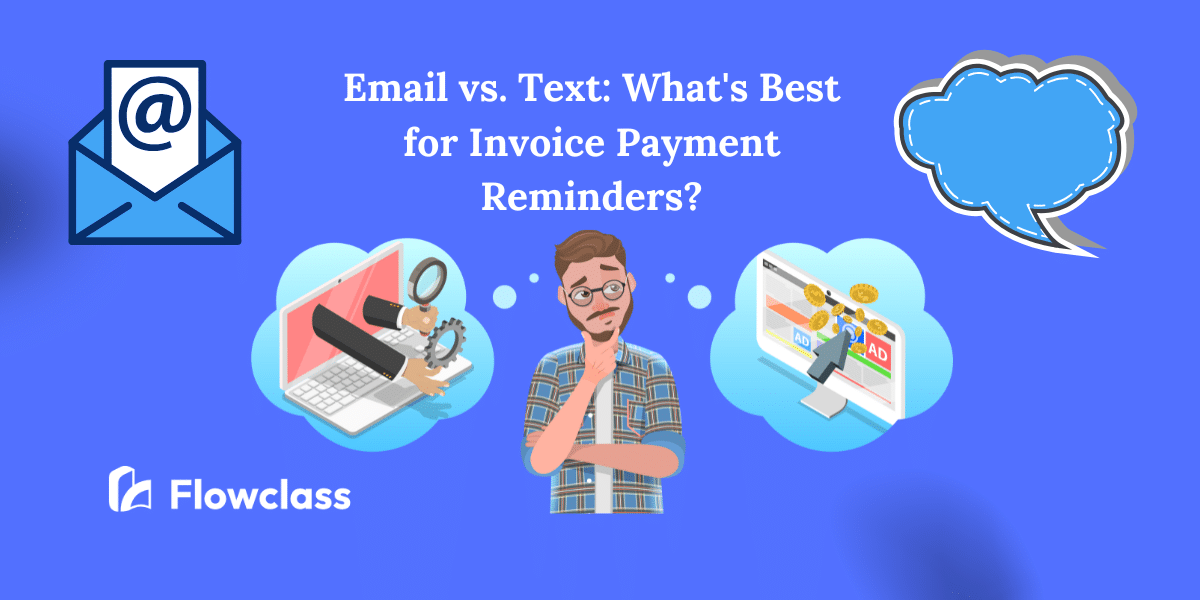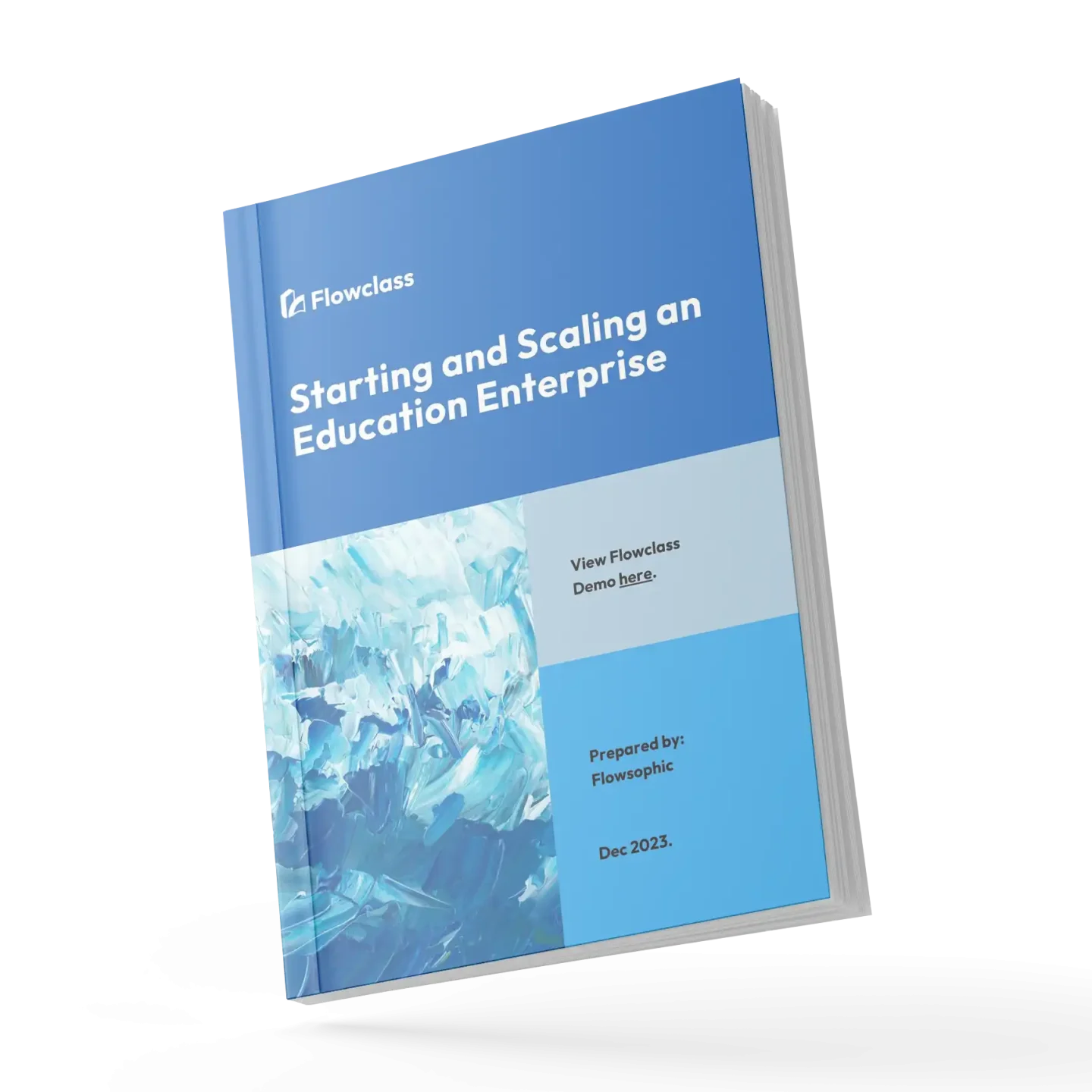For educators and learning centers, managing finances efficiently is essential for sustaining operations and delivering quality education. Invoice payment reminders are vital for maintaining a steady cash flow and ensuring that the resources necessary for providing education remain available. By keeping payment timelines on track, learning centers can avoid disruptions to their operations while also nurturing strong relationships with parents and students. When choosing the right method to send these reminders, email and text messages are the two leading options. But which one is better suited to the needs of your learning center? This blog explores the pros and cons of each, helping educators and learning centers decide the best communication channel for their invoice payment reminders.

Why Are Invoice Payment Reminders Important for Learning Centers?
Invoice payment reminders are critical for educators and learning centers to ensure timely payments from parents and students. Delayed payments can lead to significant operational challenges, such as disruptions in the ability to pay staff salaries, purchase supplies, or maintain facilities. By ensuring on-time payments, learning centers can sustain their programs and continue to provide a high-quality learning environment.
Key benefits of invoice payment reminders for learning centers include:
- Improved Cash Flow: Timely reminders encourage parents and students to pay promptly, ensuring that the center has the resources to operate efficiently and address unforeseen expenses.
- Enhanced Professionalism: Sending reminders reflects an organized approach and builds trust with parents, showing that the center takes its financial responsibilities seriously.
- Stronger Relationships: Gentle reminders help prevent misunderstandings, reduce the potential for conflicts, and ensure clear communication with parents, contributing to a positive rapport.
Email as a Method for Invoice Payment Reminders
Advantages of Using Email for Invoice Payment Reminders
Emails are a popular choice for learning centers to send invoice payment reminders because they allow for detailed communication. Here are some advantages:
- Comprehensive Information: Emails provide enough space to include details like invoice numbers, payment deadlines, methods, and any additional notes, ensuring that parents have all the information they need in one place.
- Trackability: Email platforms enable you to track whether the reminder was opened or read, giving learning centers insights into whether the message reached its audience effectively.
- Customization: Emails can be personalized with the parent’s name, student details, and branded templates. This personalization reinforces the learning center’s identity and makes the communication feel more tailored and professional.
- Automation: Tools like Flowclass allow learning centers to automate email reminders, saving time and ensuring that reminders are sent consistently and without manual intervention.
Disadvantages of Using Email for Invoice Payment Reminders
Despite its benefits, email has some challenges for educators and learning centers:
- Inbox Overload: Parents may overlook reminders in crowded inboxes, leading to delayed responses. Important emails can sometimes get lost in the clutter of daily messages.
- Spam Filters: Emails may sometimes land in spam or promotional folders, reducing visibility and requiring additional follow-ups to ensure the message is received.
- Delayed Responses: Parents who do not check their emails regularly or have irregular online habits may miss timely reminders, causing payment delays.
Text Messages as a Method for Invoice Payment Reminders
Advantages of Using Text Messages for Invoice Payment Reminders
Text messages are another effective way for learning centers to communicate payment reminders. Their main strengths include:
- Immediate Delivery: Texts are often read within minutes, making them highly effective for urgent reminders that require prompt attention.
- High Open Rates: SMS open rates exceed 90%, ensuring that your message reaches parents promptly and stands out among other communications.
- Simplicity: Text messages are concise and direct, making it easy for parents to understand and act on the payment request without feeling overwhelmed by excessive information.
- Mobile-Friendly: Most parents use smartphones, making texts an ideal way to reach them anytime, anywhere, ensuring accessibility even during their busy schedules.
Disadvantages of Using Text Messages for Invoice Payment Reminders
While text messages are effective, they have limitations for educators and learning centers:
- Limited Information: SMS has character limits, which can restrict the amount of invoice-related details you can share. This often necessitates follow-up emails or links to more detailed documents.
- Less Professional Appearance: Texts might feel informal to some parents, especially for high-value payments or when communicating with families that expect more formal correspondence.
- Privacy Concerns: Some parents might feel uncomfortable receiving payment reminders on their personal devices, particularly if they view text messages as reserved for urgent or personal matters.
Factors to Consider When Choosing Between Email and Text
When deciding on the best method for your invoice payment reminders, consider the following factors specific to learning centers:
1. Parent Preferences
- Do parents prefer email or text communication? Understanding their communication habits and preferences can significantly improve the effectiveness of your reminders and reduce the risk of miscommunication.
2. Urgency of Payment
- For overdue or urgent payments, text messages might be better due to their immediacy and high open rates. Emails, however, may be more appropriate for routine or non-urgent reminders.
3. Nature of the Learning Center
- Academic-focused centers may lean towards email for professionalism and detailed communication, while activity-based programs or informal setups may find texts more effective for their needs.
4. Cost and Resources
- Emails are generally more cost-effective, especially for sending bulk reminders, compared to text messages, which may incur higher costs per message depending on volume.
5. Technology and Automation
- Platforms like Flowclass offer tools to automate both email and text reminders, allowing your learning center to streamline processes and choose the most suitable option.
Best Practices for Sending Invoice Payment Reminders
Regardless of the method chosen, follow these best practices to ensure your invoice payment reminders are effective:
1. Be Clear and Concise
- Include all necessary details, such as the invoice number, due date, and payment methods, to avoid confusion. Providing links to payment portals or instructions can further simplify the process for parents.
2. Use Polite Language
- Maintain a professional and courteous tone to ensure parents feel respected and valued. This approach helps to preserve positive relationships even when reminders are frequent.
3. Send Timely Reminders
- Schedule reminders strategically, such as one week before the due date, a day before, and immediately after the due date, to keep parents informed without overwhelming them.
4. Automate Your Process
- Use platforms like Flowclass to automate reminders and reduce manual workload for your staff. Automation also ensures that reminders are sent consistently and on time.
5. Follow Up Strategically
- If the payment remains overdue, follow up with a more urgent reminder, potentially using a different method to ensure visibility. Tailored follow-ups can be more effective in addressing specific concerns or obstacles.
Conclusion:
For learning centers and educators, the choice between email and text reminders depends on your operational needs, the nature of your services, and parent preferences. Emails work best for detailed and professional communication, while texts are ideal for urgent and concise reminders. To optimize payment collections, consider using both methods strategically—email for routine reminders and text for urgent follow-ups.
An effective reminder system is essential for maintaining financial stability and delivering quality education. Platforms like Flowclass can help automate and streamline your communication process, ensuring timely and professional reminders that suit the unique needs of your learning center.


